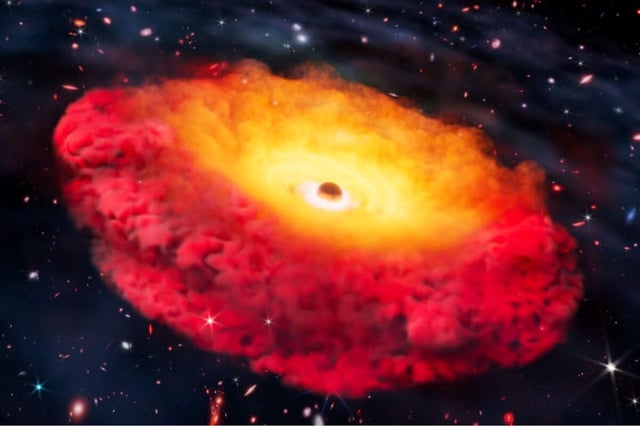Overview
- The black hole in CAPERS-LRD-z9 existed just 500 million years after the Big Bang, making it the most distant and earliest accreting supermassive black hole confirmed to date.
- JWST’s CAPERS program spectroscopy detected the hallmark broad-line signature of gas moving at extreme speeds, distinguishing the galaxy’s luminosity as driven by black hole accretion rather than stars.
- With an estimated mass of up to 300 million times that of the sun, the black hole comprises roughly half the stellar mass of its compact, red host galaxy.
- CAPERS-LRD-z9 belongs to the “Little Red Dots” class of early-universe galaxies and this finding strengthens evidence that supermassive black holes power their unexpected brightness.
- The discovery challenges existing models of black hole seed formation and will guide future high-resolution JWST observations to probe rapid early black hole growth.
